IDPs: No place to call home
The IDPs in FATA have escaped the violence but are confronted with greater challenges
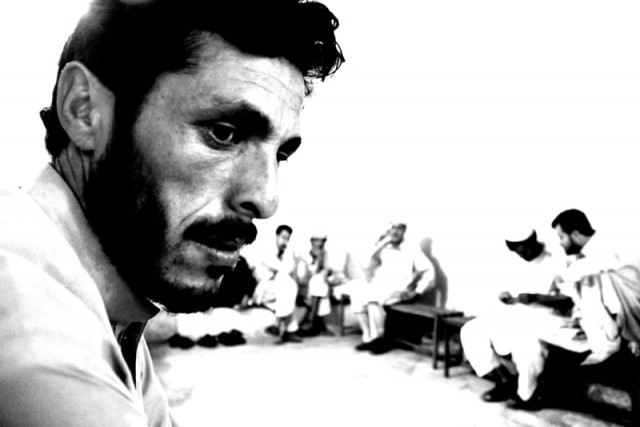
The hospital is full of women who have babies and children in their arms or sleeping by their feet. It is hard to tell the children’s ages since most of them are malnourished and look much younger than they are. Most of them are between the ages of six months and five years and are being treated for measles and dehydration. Their parents have to travel long distances to receive the required medical treatment as the ongoing violence in the province, especially in militancy-hit areas such as Kurram, has taken a strong toll on the healthcare infrastructure in the region.
The other side of war
So far this year, MSF has treated 213 children for measles at its hospital in Sadda, which specialises in children’s healthcare. In most of the cases, the children had developed pneumonia and meningitis and needed urgent medical care. “What is upsetting is that so many of the conditions we see here are preventable,” says Dr Rahman Sakhi, one of the senior doctors at MSF who sees dozens of such cases every month. “The community is suffering unnecessarily because of the militarisation in the area.” Since health workers’ access to the community is restricted, diseases are magnified and the patient ends up facing a lot more pain which could have been prevented if diseases like measles are tackled in the initial stages. “There is no reason for a child to suffer like this,” he says. “We are part of this community and we feel the pain of their parents and loved ones. Nobody wants to see a child in pain like this.”

MSF operates a health facility in the Alizai area of Lower Kurram Agency, catering primarily to mothers and children. PHOTO: NOOR PAMIRI

Female patients are the most vulnerable when it comes to healthcare since their mobility is limited and the region suffers from a lack of female doctors and healthworkers. PHOTO: NOOR PAMIRI
More than 175 healthcare facilities and 500 schools have been targeted and destroyed by militants across FATA since 9/11, according to Nizam Khan Dawar, a human rights specialist and CEO of the Tribal Development Network, a network of local organisations working for peace and development in the province. “Even in war zones, hospitals and schools should be neutral places and shouldn’t be attacked,” he says. “The ongoing violence is weakening the health system and disproportionately impacting women and children.”
Nizam elaborates that female doctors and health workers continue to face the brunt of violence and intimidation from militant groups who question women’s right to access healthcare, especially reproductive healthcare. “There is a shortage of women health workers and women doctors who can provide healthcare for women,” he says. “Many are pregnant and especially vulnerable as they are displaced by ongoing military operations and fighting in the area,” he says. Women doctors, nurses and health professionals continue to be targeted by militants and put under pressure to give up their work and stay inside their homes. “The threats and feeling of intimidation is increasing in many areas,” he says.
More than just a number
The Kurram Agency in Pakistan’s tribal belt sits on a political fault line. It borders the conflict-ridden areas of K-P and Balochistan on its east and south respectively and also shares a boundary with Afghanistan on the north and west. Since 2007, large swathes of the tribal belt became a battle ground as the conflict in neighbouring Afghanistan spilled over into Pakistan’s soil with militant groups unleashing a bloody carnage and chaos to take control of the area. Schools, hospitals, homes and even entire villages fell victim to the war, killing hundreds and displacing many others. The area was a stronghold of the Taliban until 2008 when the Pakistan Army ordered a military operation in the region to flush out the militants. The region has also experienced sectarian violence as tensions grew between the Sunni and Shia groups.

Attendants at the waiting area of MSF Women’s Hospital in Peshawar. PHOTO: NOOR PAMIRI

Gul Bibi came to the MSF hospital in Sadda, Kurram Agency, with her daughter, grandson and grand-daughter, who is suffering from dehydration. PHOTO: NOOR PAMIRI
An uneasy calm has been established in the area for the past three years, following the end of the military operation Koh-e-Safaid, which resulted in the lower and upper subdivisions of the agency falling back under government control. The fragile peace was shattered once again earlier this month when a school van hit a roadside bomb in Nasti Kot, Parachinar, and killed a child and the bus driver while injuring many others. As the United Sates gears up to reduce the number of US troops in Afghanistan next month, people in the area also fear an increase in violence.
Even though the residents of Kurram and other militancy-hit areas have survived death, disease and terror, their suffering remains alien to the rest of the country. They either remain largely invisible on news channels and newspapers or their names, faces, daily realities and struggles are reduced to a number that either announces their death or displacement.
No country for old women
Gul Bibi, who belongs to a village in Upper Kurram, which was home to nearly 20,000 people, is one of the faces behind that number. As she waits for an MSF doctor to examine her eight-month-old granddaughter who is suffering from dehydration, she recounts her story.

The victims of Leishmaniasis are often excluded and mistreated. The treatment options now available at the MSF hosiptal in Sadda are expected to improve their condition. PHOTO: NOOR PAMIRI

Leishmaniasis is a sand-fly induced skin dis ease which leaves scars on the body of its victims., The elderly, women and children who have been displaced in FATA have to travel long distances to get basic medical treatment. PHOTO: NOOR PAMIRI
“We lived in peace. We lived good lives,” she says about her life back in the village. “We had a lot of food and land and we didn’t need anything. We had been blessed with a lot — our health, our children and our grandchildren.” She pauses for breath, closes her eyes and continues. “Then three years ago everything changed. ‘They’ came to the area and nothing was the same again,” she elaborates without ever naming the militants. At first, the women were told not to leave their homes. Then people began being kidnapped for ransom. “There was fear everywhere,” she says. “We went from living in a happy and peaceful place where everyone knew everyone to not knowing who we could trust or who was living amongst us.” Gradually, the violence picked up momentum and the militants started burning down houses and schools. “I still see our village burning when I close my eyes and try to sleep,” she says. Her voice begins to crack but she doesn’t want to take a break. She says she wants to be heard and wants people to know what she has been through.

When things showed no signs of improvement, Gul Bibi convinced her husband to leave the village. Her husband was frail and unwell at the time but they knew their options were limited. “We left with nothing but the clothes that we had on,” she says. “We walked for five hours. I found a donkey cart on the way and asked the man to help me lift my husband on to it so that he could complete the journey.”

For the past three years, Gul Bibi has been living in a tent in a camp near the hospital. “This is not where a woman of my age should be living,” she says. “I have a home and a village and a country, yet I am living in this tent with my daughter, her children, her husband and other members of my family.” According to Nizam, most IDPs are in Bannu while a significant number is also living in tents in Peshawar and along the road to Bara. Those displaced from Kurram Agency are concentrated near Dera Ismail Khan, Sadda, Hangu, Tal and Nowshera.

He explains that the number of IDPs living in the Durrani Camp (where Gul Bibi lives with her family) is hard to estimate due to the loopholes in the registration process — people without identity cards or women who have been widowed cannot register. However, the terrible conditions that these families are living in are quite clear. Large families are cramped into small tents and are dependent on government aid or NGOs for basic necessities such as food, medicine and clothing. Those who are unable to register themselves also face difficulties in accessing aid. Poor living conditions, lack of clean drinking water, poor healthcare facilities and malnutrition has led to the death of dozens of children from curable diseases such as gastroenteritis, typhoid and respiratory infections. Amidst this chaos, Gul Bibi yearns for a safer future for her grandchildren, preferably back home. “I find it hard to sleep at night; I spend most of the night thinking about everything I’ve seen,” she says. “I yearn to return to my village.”
Restoring dignity
Living conditions for the displaced in FATA show little signs of improvement. The IDPs’ health issues are secondary to the security concerns of the region, says Dr Javed Ali, MSF’s medical coordinator responsible for running health projects in FATA. “The north western [region] of Pakistan has traditionally been victimised by sectarian violence, militarisation and mass displacement of the population because of the war on terror,” he says. “All of these factors have had a repulsive impact on the health policy and healthcare at the regional level.” Healthcare has suffered extensively due to the conflict in the area and has led to a shortage of medical staff and medical supplies and there is no system in place to monitor and evaluate, strengthen and support a coherent health policy in the area.”

A senior official in FATA’s Health Directorate who spoke on the condition of anonymity says that the security conditions are not the sole problem. “Even when people risk their lives to access healthcare in the area, most hospitals don’t even have the basics such as doctors, medicine and electricity,” he says, adding that medical facilities are not functioning even in areas where there is no violence. “Corruption and mismanagement of medical budgets is exacerbating people’s misery and there has to be accountability for things to improve,” he adds.

Dr Javed also emphasises the need to go back to the basics where there is one functioning health facility for every 5,000 people and they can access medical facilities without fearing for their lives. Even though organisations such as MSF, Ehsaan Foundation, UNHCR and CAMP are striving to fill the vacuum in healthcare facilities in the area, a far more integrated and consistent effort is required at the provincial and national level for those whose lives have been uprooted to feel at home again.
Shaista Aziz is a freelance journalist based in Islamabad, Pakistan, and is a communications advisor for MSF, France. She tweets @shaistaAziz
Published in The Express Tribune, Sunday Magazine, November 30th, 2014.

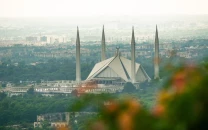
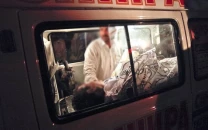
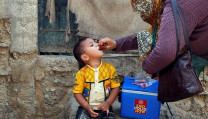
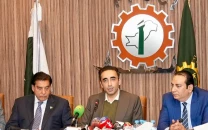
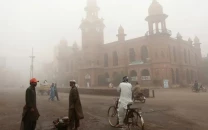













COMMENTS
Comments are moderated and generally will be posted if they are on-topic and not abusive.
For more information, please see our Comments FAQ